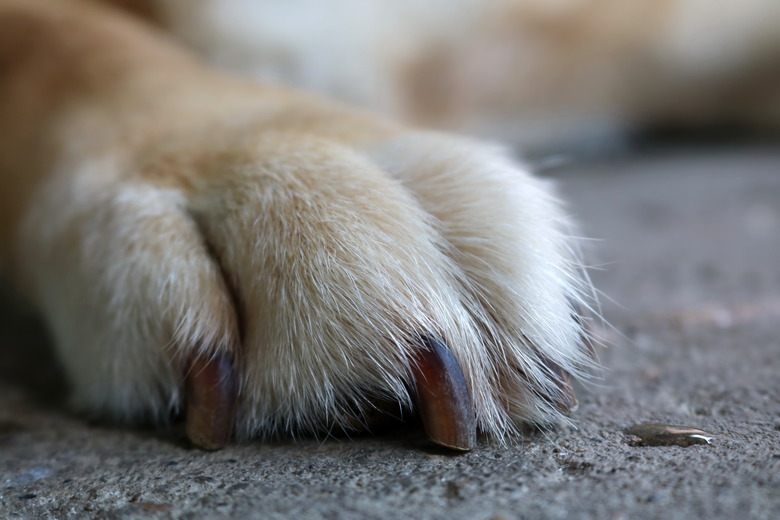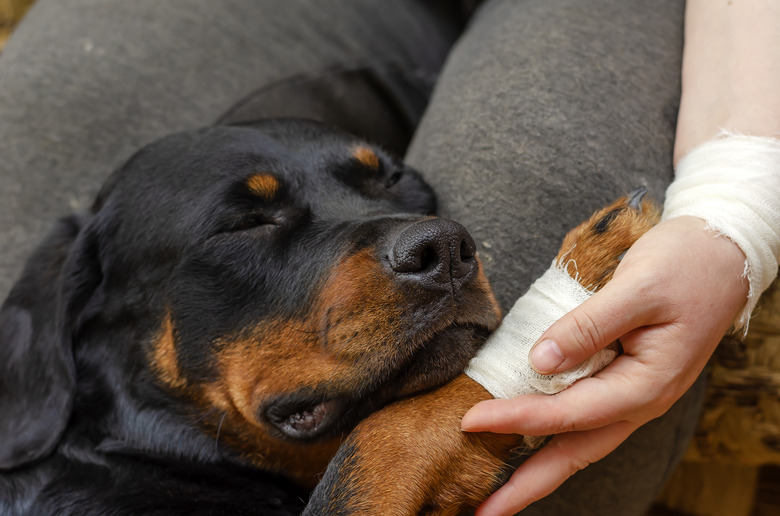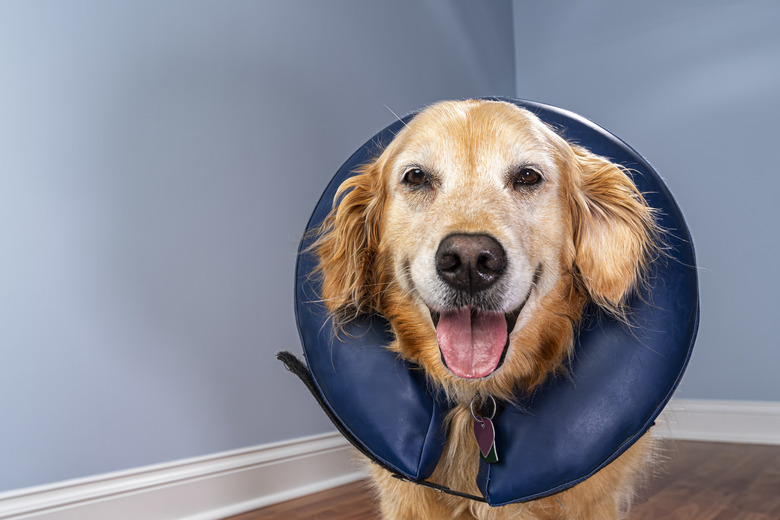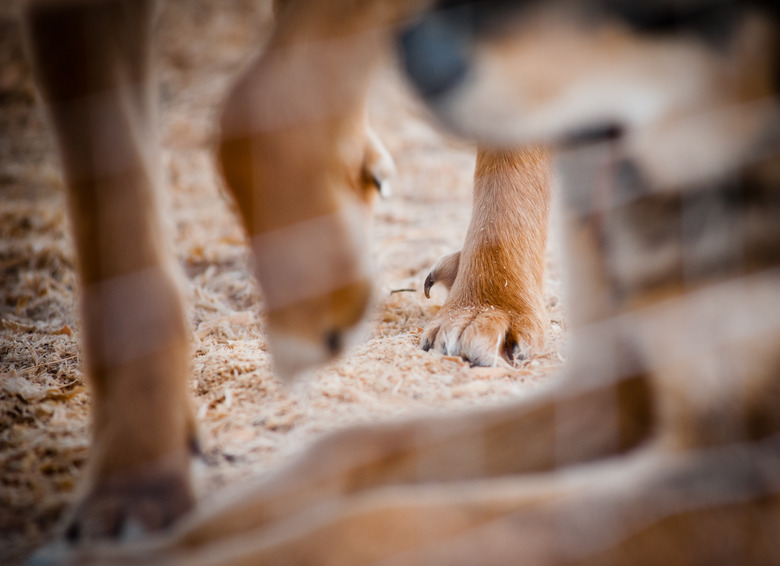How To Care For A Missing Dog Nail
When a dog breaks or loses a toenail, it can be a jarring experience for both pet and owner. Even if the injury is minor, it can involve a surprising amount of blood and can be significantly painful for the dog. The further down the nail bed the injury goes, the more it hurts. Because dogs can be stoic and hide their discomfort, it is easy to underestimate the amount of pain your pet is in when a nail breaks or falls off. In fact, dog nail injuries are often so painful that they require a trip to the veterinarian.
Is a broken dog nail an emergency?
Is a broken dog nail an emergency?
No. Generally, a broken dog nail is not a pet health emergency. However, pet owners should still seek out veterinary care in a timely manner. Each nail has its own blood vessel (the "quick") inside it. There is also a nerve in the same area, so the part of the nail that is broken can be quite painful. Consider how uncomfortable it would be if you experienced a similar nail injury when deciding whether or not to treat the injury at home.
How do I treat my dog's broken nail?
How do I treat my dog's broken nail?
It's always advisable to visit your veterinarian if your dog has a nail injury, but in the meantime, you can perform some basic first aid at home.
Evaluate the dog's toenails
First, evaluate the severity of the injury. Check to see if the dog lost their toenail completely. If the nail is still in place, it will need to be removed up to the area where the break occurred. If the break is close to the tip of a long nail or if it's hanging on by a thread, you might be able to carefully remove part or all of the injured nail yourself.
Consider your dog's temperament. If they usually struggle during nail trims, you should go to the veterinarian to have the injured nail examined. Even a sweet, tolerant dog might bite when in pain.
Remove the dog's broken nail
If you decide to remove your dog's broken toenail, use clean dog nail clippers and go slow. Place a muzzle on your dog to prevent getting nipped. It is a great idea to keep a muzzle in your dog's first-aid kit and train your dog to wear it in preparation for situations like this.
You don't need to take off the entire dog nail, but you should remove the nail up to the break so it can grow back healthy. If the nail has a crack that goes past the main injury, the entire nail all the way to the top of the crack will need to be amputated. This is a job best reserved for the veterinarian because it will require sedation.
Even if your dog is extremely calm and will let you remove the nail, remember that if it's not dangling, you are very likely to cut into the quick. This will hurt your pet immensely, the same way it would hurt if someone cut the inside of your nail bed.
Stop the dog's toenail from bleeding
Chances are the broken nail will bleed. Don't be surprised if there is a lot of blood. You'll need to stop the bleeding. Use a styptic pencil or powder or cornstarch, baking soda, or flour and apply pressure to the wound using a clean cloth. Avoid styptic pencils or styptic powders that do not contain the numbing agent benzocaine, as products without this ingredient will burn and be very uncomfortable for your pet.
Clean and bandage the dog's toenail
Bathe the paw in warm water with mild soap and clean out all traces of dirt and debris. You might use a bulb syringe to help dislodge any material stuck to the toenail. If you have it on hand, apply a pet-safe antiseptic to the toe to disinfect it.
Finally, bandage the paw with rolled gauze held in place with self-adhesive wrap. Do not perform this step until the paw is completely dry, as moisture underneath a bandage can lead to infection. You can use a hair dryer on the low setting to help the fur dry faster.
Be careful to bandage the dog's paw securely but not too tightly. You should be able to slip two fingers under the bandage. Make sure you can see the tips of your dog's two middle toes sticking out of the bandage so you can check for swelling.
Ask your veterinarian how long they recommend you bandage your dog's paw. Then change the bandage daily and look for signs of infection, such as oozing, pus, inflammation, or a toe that is unusually hot to the touch. If you're concerned that the toe or claw might be infected, call your veterinarian. If the bandage gets wet, such as from going outside, it needs to be changed right away.
Will a dog's broken nail heal on its own?
Will a dog's broken nail heal on its own?
Yes, a dog's broken nail will usually heal on its own, but it's still important to care for the injury properly to avoid unnecessary pain or an infection. Your dog will be uncomfortable for several days while the torn nail heals, and you might even see them limp. Ask your veterinarian if the broken nail needs further attention or pain management. Some dogs will lose their entire nail and never grow a new one, even after the injury heals.
Should I let my dog lick their broken nail?
Should I let my dog lick their broken nail?
No. Any licking or soiling in the area of a dog's broken nail has the potential to cause further pain and/or infection. If your dog attempts to lick, bite, or chew at the damaged nail or bandage, consider an Elizabethan collar, often called a "cone" or "e-collar." If your dog won't tolerate the traditional stiff, plastic e-collar, look for a soft fabric or inflatable version. Observe the dog after you place the e-collar to make sure they cannot reach around their cone and lick the toe.
Veterinary treatment for your dog's broken nail
Veterinary treatment for your dog's broken nail
Letting the veterinarian treat your dog is always the best option. When a veterinarian removes a broken nail, they'll sedate your pet, and they most likely will send your dog home with pain medication. This can save your dog from a lot of suffering. The veterinarian will also clean, disinfect, and bandage the wound to prevent infection. They might prescribe antibiotics to prevent infection.
Broken dewclaw treatment on a dog
Broken dewclaw treatment on a dog
Dewclaws, the nails found higher up on some dog's feet, are more susceptible to breaking than other nails because they are more loosely attached. While the process for treating them is similar to that of any other nail, your veterinarian might opt to remove the dewclaws altogether if they are injured given that they are at risk of snagging on objects and getting injured again.
Dewclaw removal is a surgical procedure similar to a toe amputation, requiring general anesthesia. This likely would not be done the same day as your regular appointment. If your dog has a broken dewclaw, be sure to ask your veterinarian if they think removing the dewclaws is advisable.
The bottom line
The bottom line
When a dog breaks their nail, it can be extremely painful, and it also comes with the risk of infection. While a broken dog toenail is not generally life-threatening, dog owners should consult their DVM. In the meantime, you can also perform some basic home first aid, including evaluating the broken nail, bandaging the area, and keeping it clean.



